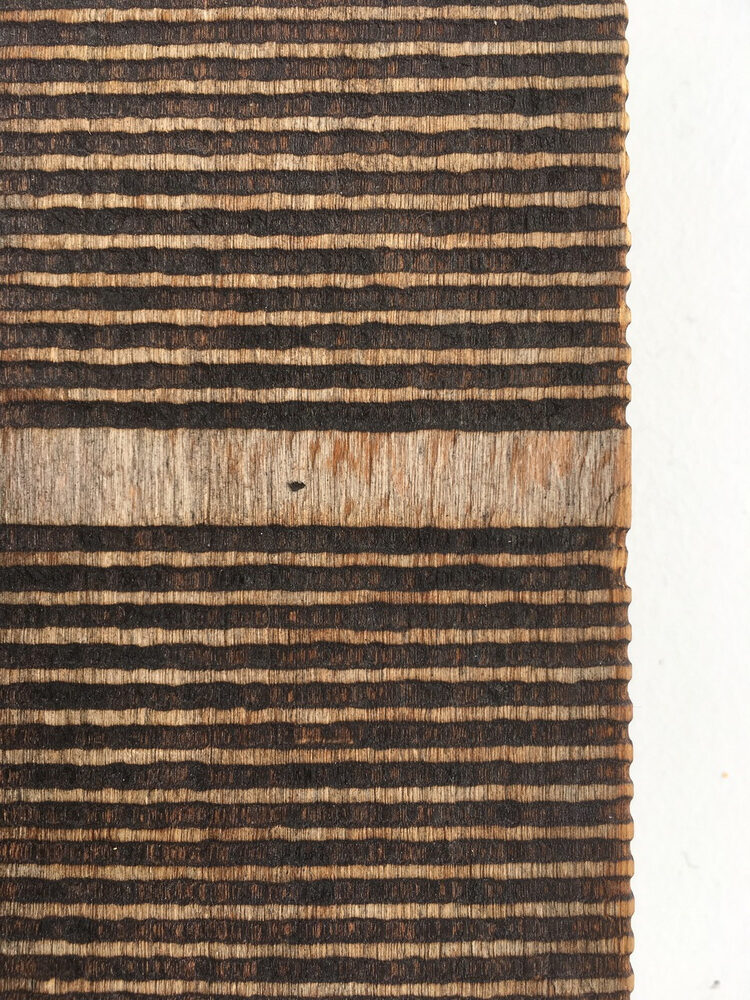English artist Roger Ackling (1947 – 2014) is known for delicate wood sculptures made with the sun’s rays and magnifying glasses onto found materials such as driftwood and junk. Ackling developed this method early on in his career, attending Saint Martin’s School of Art from 1966 – 1968, at the same time as Richard Long and Hamish Fulton, who would become his close friends and colleagues. Like Long and Hamish Fulton, Ackling worked in the open air, in close contact with nature and landscape; his work realized by the forces of nature, with Ackling merely as the mediator. Ackling sat for hours with his work, holding a wooden block or other material in his left hand, and in the right he focused a magnifying glass on the materials. Through the magnifying glass the sun’s rays fractured and scorched points into the material, and with the artist slowly moving the magnifying glass left or right, the points would gradually form a line. Occasionally the line would break when, for example, cloud cover would prevent the sun’s drawing, but the magnifying glass had to be at the right distance from the material for the sun to burn into the wood. Quiet and meditative sculptures resulted, often named after the places where Ackling was while making the work. The subtitle addresses the method and material such as: sunlight on a tree, sunbeams on a leaf, sunbeams on a hanger, and so on. Alongside his art practice, Ackling was a well-respected teacher, who influenced many generations of young artists. Ackling held an exhibition of his works in Second Floor (Önnur hæð) in Reykjavik in 1995, and the work exhibited at Sequences IX was included there. Ackling had come to Iceland once before then, during June 5 – 12, 1979, when he and Hamish Fulton went for a walk that began and ended in Holmavík. Fulton took photographs during this walk, while Ackling collected driftwood he later worked with in the aforementioned method.
